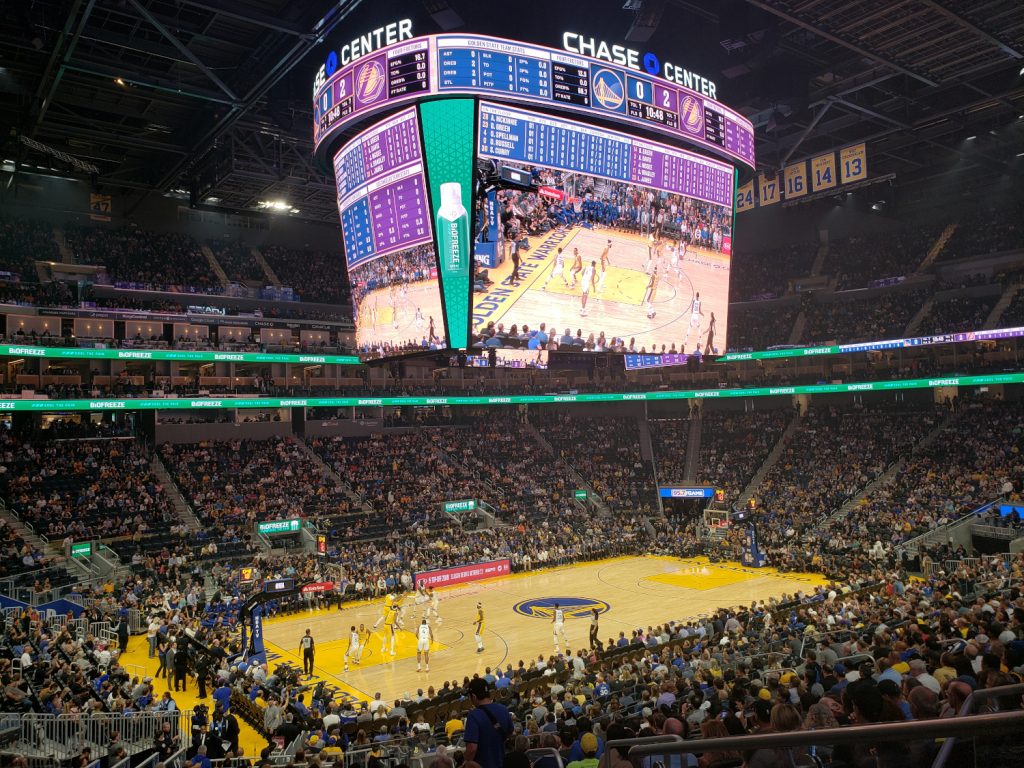Technology will play a key role.
Earlier this year, many sports fans around the world—myself included—were making plans to see our favorite teams in action. We had tickets in hand, and we were dreaming of playoffs and championship games. Then, members of the Utah Jazz tested positive for the novel coronavirus (COVID-19) and, in a blink of an eye, the National Basketball Association (NBA) immediately suspended the season until further notice. That was March. Shortly thereafter, the dominos began to fall: Soccer leagues suspended play, the National Hockey League (NHL) paused its season and Major League Baseball (MLB) canceled spring training. None of us could have anticipated that our spring would be spent without the NBA Championships or the Stanley Cup playoffs, which were delayed to late summer/early fall, or that both tournaments would be played inside quarantined “bubble” arenas in whose stands there were no fans. Now, as states work to create a new normal, sports leagues are evaluating what the future of sports will look like; meanwhile, stadiums are working to redefine the fan experience. Now, as states work to create a new normal, sports leagues are evaluating what the future of sports will look like; meanwhile, stadiums are working to redefine the fan experience.
Previously, stadiums were selling out many games each season, with fans eager to watch their favorite teams play live. There was tailgating in the parking lot and camaraderie between fans sitting next to each other—an experience that guests would carry with them long after they’d left the game.
Indeed, creating a more dynamic, unforgettable fan experience had been the mission of teams from all sports prior to the pandemic. As a result, they continued to make investments to upgrade their facilities. After all, every trip to a stadium presents an opportunity for fans to make new, lifelong memories. Meanwhile, owners realize the need to use innovative technology to complement what’s taking place on the field and create an immersive experience not found anywhere else.
With teams starting to come back, playing to cardboard cutouts in the stands or virtual fans on LED screens, with only piped-in crowd noise to cheer them on, owners are busy planning for a time when spectators, too, will be welcomed back. Owners across leagues must share best practices and focus on what safety measures to take to keep fans protected and at ease when they return. Surely, fans will be on high alert for the safety guidelines implemented and the protocols instituted.
Providing clear, concise communications will be a vital component of reuniting teams and fans. As decision-makers begin to review safety standards and put plans in place, it is clear that technology will play a key role in every aspect of the redefined sports-fan experience—everything from the screening processes used as fans enter the stadium to the activities taking place during the game.
In order to create the safest environment possible within the stadium, temperature-screening measures will have to be instituted to identify any potential risk before entering the venue. Many companies are introducing thermal-screening solutions that can read a patron’s temperature and then display the reading on a screen nearby. This quick, initial screening measure helps increase safety within the stadium.
Once fans are inside, digital-signage technology can be used to provide wayfinding capabilities and assist guests in finding their seats, while also guiding them to food vendors and information desks. Because digital displays can be updated quickly and efficiently, stadium managers can leverage their remote-management software to adjust onscreen content and messaging, ensuring that the content shown best serves the stadium’s needs at that moment. Stadium managers can quickly update the menu-board options if certain items are sold out, and digital signage can be a resource for inclement-weather updates or traffic information following a game. What’s more, digital-signage implementations for wayfinding and disseminating information help minimize interactions between stadium staff and guests, protecting both parties while they are in the concourse area.
The vibrant, engaging videoboards above the field can be leveraged throughout the game to push urgent updates, such as weather changes and traffic information. Additionally, as many stadiums update their general policies, new guidelines can be broadcast for all to see on the videoboard, helping to ensure faster adaptation. The
digital signage located throughout the concourse can also be synced up with the videoboard so that all messaging, throughout the venue, is consistent and guests can access it from anywhere.
Investing in this technology to amplify the fan experience, while meeting Centers for Disease Control and Prevention (CDC) guidelines, will offer benefits for years to come. Moreover, these digital displays can easily be repurposed once stadiums shift back to normalcy, thanks to the flexibility that comes with using remote-management software. In the future, they can broadcast sports highlights, welcome messages and stadium policies that fans might need to know.
As a major sports fan, I was devastated to hear that sports would not be returning to any true normalcy this year. Some of my best experiences took place at the incredible stadiums across the nation, and I’m looking forward to the day we can all return, in person, to cheer on our teams. With the revolutionary technology that AV integrators can implement in stadiums and arenas, I’m confident that day will come soon. And, when it does, we’ll all be able to enjoy a safe, engaging sports experience.
To read more from Sound & Communications, click here.
